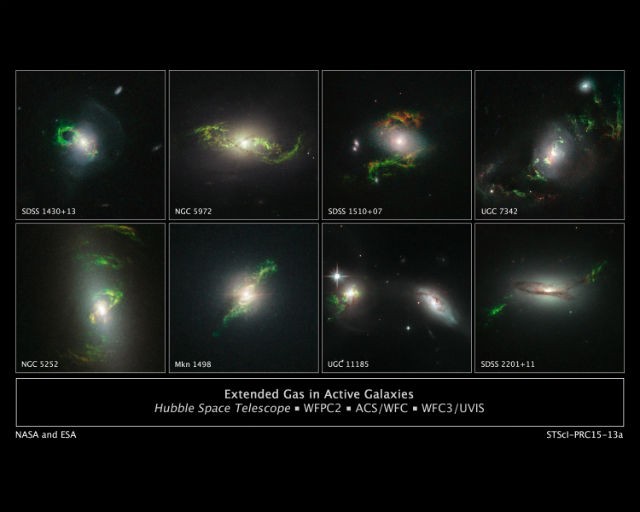Spectre of green lights in the outer space is often rare and elusive. Aside from verdant aurorae and comets emitting green lights as its carbon component gets baked by the Sun's ultraviolet rays, seeing verdedescent lights isn't a usual thing in almost pitch black deep space.
However, a Dutch school-teacher in the name of Hanny van Arkel proved that there is another celestial activity that produces greenish lights. In 2007, van Arkel discovered galaxies that contain blobs of green lights after taking a keener observations at several photos from the Sloan Digital Sky Survey. Van Arkel, who is also a volunteer for citizen-science project citizen-science project, Galaxy Zoo, then began calling this new set of star-harboring bodies as Green Pea Galaxies.
Through the help of some of the world's most powerful telescope, Spectroscopic observers had the chance to have a deeper look at these galaxies and found out the green lights are results of massive amount of oxygen getting ionized by ultraviolet radiations. Van Arkel's object or what's now known as Voorwerp are apparently the offspring of violent clashing of two galaxies, each with supermasive blackholes at its center.
"Now, new data from the Hubble Space Telescope as well as from ground-based observatories suggest that those supermassive black holes, each with a mass of hundreds of millions of suns, are the likely power plants for the Voorwerpjes," according to Scientific American.com.
Bill Keel, an astronomer of the University of Alabama in Tuscaloosa, pointed out that the green stream of lights radiating 10,000 lightyears away from the center of these Green Peas galaxies are actually 'echoes of immense burps' coming from a galaxy that consumed another or Galactic cannibalism that happened eons of years ago, whem the universe was still young.
More details of Van arkel's breakthrough findings about Voonwerps and the role of binary blackholes upon it will be published in the upcoming edition of the Astronomical Journal.



























